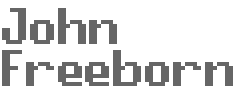Case Study: Specialized Quickfire T-Shirt Program
Much of my time at Specialized Bicycles was focused on the e-commerce business. At this time, we weren’t yet selling full bicycles on the site–but equipment and accessories were strong sellers and we spent a lot of time optimizing this experience. During this time, something struck me as odd in the apparel line.
Our t-shirts were horrible.
The shirts were simple logo color variations with no personality. Specialized is a hardcore brand with devoted followers and t-shirts are marketing. Why was our t-shirt offering so poor? I started an investigation.


A partial view of the org at Specialized at this time
Connecting the dots accross the organization
I started at the source. I talked with the apparel team and discovered three key issues. First, the apparel team was understaffed. Second, the t-shirts were always the last thing to get designed and became an afterthought. Jerseys, gloves, shoes, and all the other products took a lot of time, resources, and technical skill. T-shirts were not a priority. Lastly, the production timeline for t-shirts was over six months. This time lag made it really difficult to be on trend and impossible to react to events in the market.
The apparel team agreed that t-shirts were an important element of marketing the brand. The opportunity that I presented, being from the e-commerce team, was that I could generate direct sales and drive the t-shirt business in a way that the apparel team had little control over in the old-school wholesale business model.
Change requires buy-in from many elements within an organization. In order to execute this program, I had to get alignment from e-commerce, global marketing, product, apparel, logistics, planning, and shipping. In addition, the C-suite leads for each group needed to be pitched for final approval.
The proposal
- Produce t-shirt blanks to specification
- Ship the blanks to our warehouse in Salt Lake City
- Contract with local screen printers to print designs on demand
The e-commerce team would own the inventory which gave us control to drive sales and marketing efforts around this program.
Example scenario: One of our team riders wins an important race. We could quickly develop a graphic, print the t-shirts locally and promote the product in parallel. This would give both marketing and e-commerce teams the ability to react quickly to a real-time event.

(Above) By front-loading the t-shirt production we were able to dramatically reduce the time to market from seven months to six weeks.
(Below) Some sample t-shirt designs that were created for the pilot of the quickstrike program.

“I loved the entrepreneurial spirit John showed in seeing an opportunity and bringing it to life” Stephanie Roberts, CFO
Collaboration with apparel
I partnered with the apparel team to create a t-shirt specification that maintained the brand’s quality standards, color lineup, and details (tags, neck labels, etc.). We agreed on a selection of colors and sizes and I reached out to the entire design community inside of Specialized to come up with design ideas. We selected four designs for a pilot.
Pitching leadership
I worked on a detailed plan and pitched the concept to management. Our CFO was very supportive of the idea and encouraged us to ‘go big’ with the program. We considered other needs within the company and expanded the program to include internal events like Bike to Work Day and the 40th Anniversary of the company.
Support from the team
This project took many months to conceive and pilot. I got a lot of support from my direct manager, the apparel team, and upper management. This program was not part of my job description. I saw a need, dug into the problem, and worked to find a solution that elevated the business. In simple terms, we made cool t-shirts possible.
